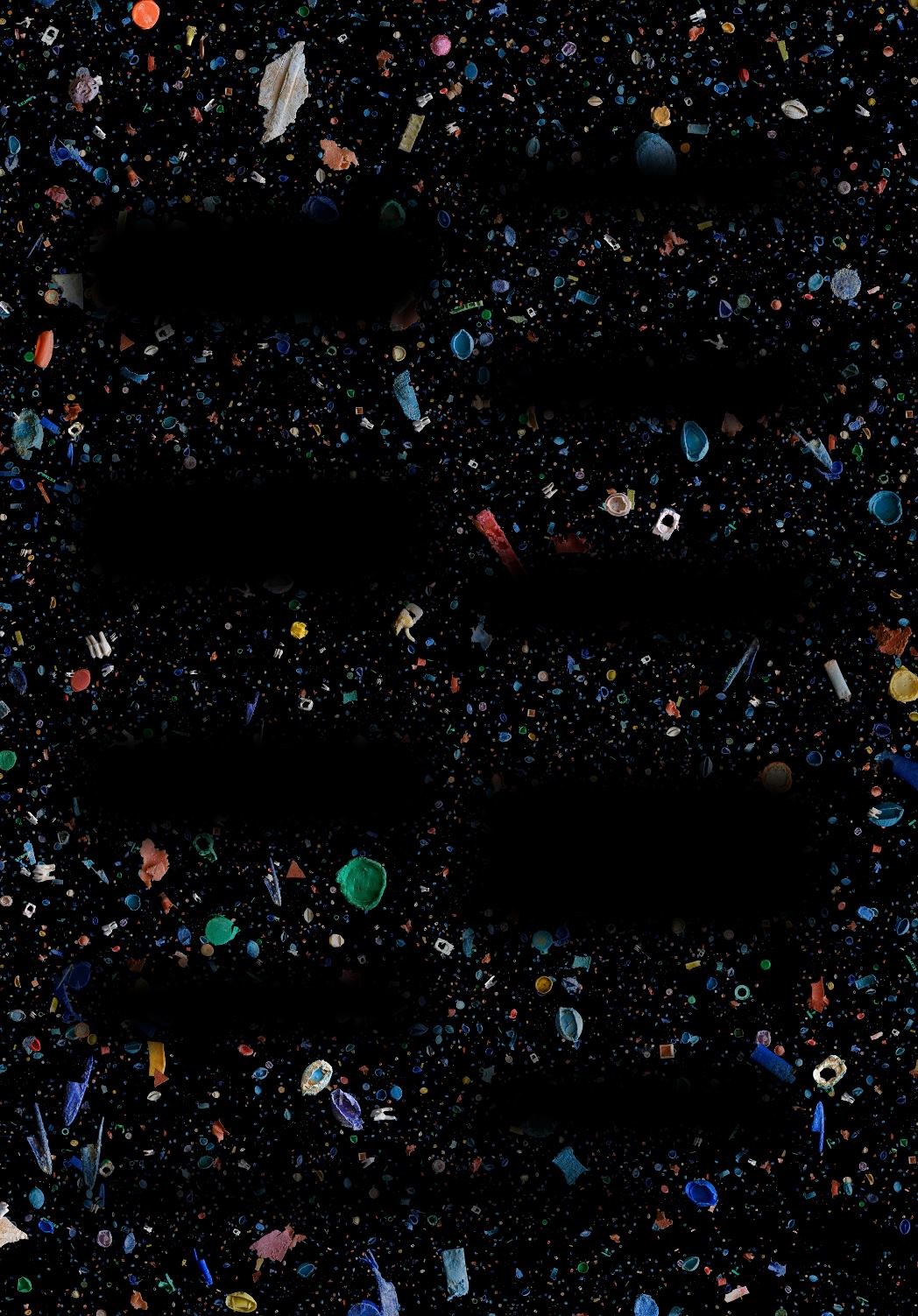

Themicro- and nanoplastics we find in the environment
start as packaging, car tyres, cosmetics, toothpaste,
clothing fibres, artificial grass, coatings on cans,
detergents, cigarette filters, or balloons. Sometimes,
they are tiny from the very beginning as scrub
particles in cosmetics or micro-fibres in fleece
sweaters.
Litter is the most noticeable type of plastic. However,
many of the plastics around us are so small that we
can’t even see them. Litter is degraded by sunlight and
car tyres wear out as a result of contact with the road.
We use the term ‘microplastics’ for particles smaller
than five millimetres. Particles of less than 100 nano
metres are referred to as ‘nanoplastics’.
Microplastics such as scrub particles from cosmetics,
or clothing fibres that enter our waste water through
washing machines, are not all removed by water treat
ment plants. After treatment, domestic waste water
contains an average of 50 particles per litre, all of which
enter the surface water.
Microplastics are also found in the air. For example,
if you run your hand over a fleece sweater, fibres will
be released into the air as particulatematter, before
entering the surface water when it rains.
High concentrations of microplastics can already be
found in river deltas and particularly in sediments,
in fish and in shellfish such as mussels. On average,
a Dutch person will consume an estimated 11,000
microplastic particles every year by eating mussels.
Plastics also get into other foods such as honey or milk
through the air, the water and other organisms.
Nanoplastics may be more dangerous than micro
plastics. They are small enough to pass through the
intestinal wall and to accumulate in places where they
don’t belong.
Plastics can also represent a danger to health because
they contain poisonous substances or because
organisms that can make us ill bond to the plastic,
spreading easily as a result. It is still unclear how toxic
this plastic is for people.
Some cosmetics manufacturers and other industries
are already working on making their products more
environmentally friendly. Sewage treatment plants are
also being improved to reduce the amount of plastics
getting into the environment. A straightforward
solution to stop the spread of synthetic clothing fibres
involves installing filters on washing machines and, in
the longer term, producing environmentally friendly
and sustainable clothes.
Deltares has been studying plastics in the coastal
zone and in our seas since 2010. A few years ago,
this field was extended to include rivers and the
focus is now on urban environments.
For more information:
dick.vethaak@deltares.nl4
5
9
8
7
6
3
2
1



















